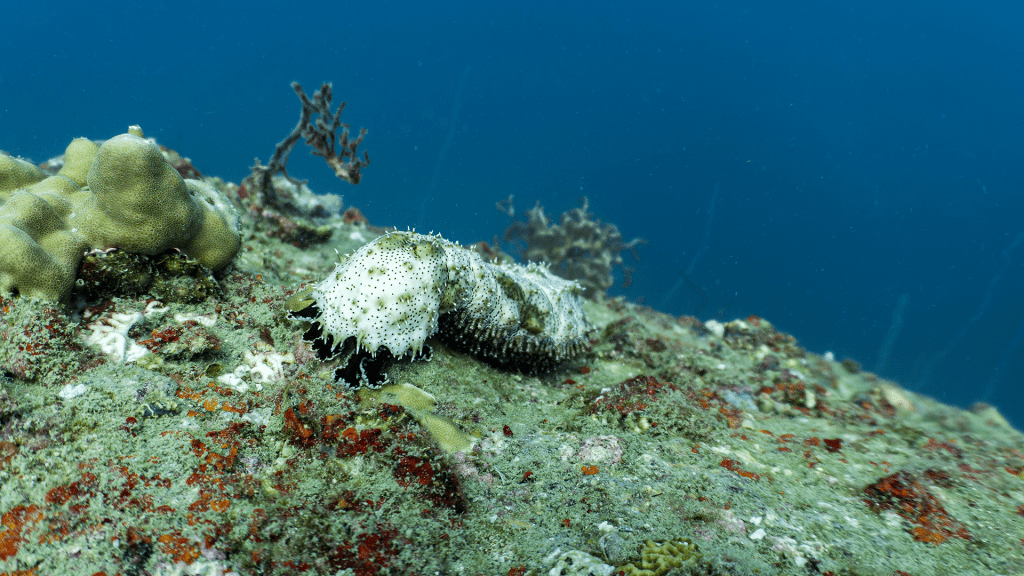Marbled Sea Cucumber

The marbled sea cucumber (Bohadschia graeffei / Pearsonothuria graeffei), is widely distributed in the tropical waters of the Indo-Pacific region and plays an important role in coral reef ecosystems.
It has an elongated, cylindrical body covered with numerous small dark spots, forming a characteristic marbled pattern. Its coloration varies from light brown to gray with dark markings, allowing it to blend into its surroundings. Slightly raised longitudinal lines may run along its body.
This species can reach a length of 30–40 cm, with some individuals growing up to 60 cm. Numerous tube feet on its underside help it move along the seabed.
This species is widely distributed in the tropical waters of the Indo-Pacific region and plays an important role in coral reef ecosystems. It inhabits sandy areas near coral reefs and lagoons with soft bottoms at depths of 1 to 30 meters. It prefers areas with good water circulation, which facilitates the filtration of nutrient particles and prevents sediment accumulation.

This species plays a crucial role in maintaining the cleanliness of the seabed by processing organic material and preventing excessive accumulation. It feeds on organic particles, detritus, and microscopic organisms, recycling sand and releasing a purified substrate. In this way, the marbled sea cucumber acts as a natural filter, improving the quality of the marine environment. Without such organisms, the seabed could become covered with thick layers of detritus, making life difficult for other marine species.
Like many sea cucumbers, this species has several unique defense mechanisms:
When threatened, it expels Cuvierian tubules—sticky white threads that can entangle and deter predators. In its juvenile stage, it uses mimicry, resembling toxic nudibranchs such as Phyllidia varicosa, reducing the likelihood of predation. It has regenerative abilities, allowing it to restore damaged body parts after predator attacks. Marbled sea cucumbers reproduce sexually by releasing eggs and sperm directly into the water, where fertilization occurs. After fertilization, the eggs develop in plankton before the juveniles settle on the seabed and transition to a benthic lifestyle.
In some cultures, sea cucumbers are considered a delicacy, but this species is rarely consumed due to the presence of bitter and toxic substances in its tissues, making it unsuitable for culinary use.
Sea cucumbers are actively studied in biomedical research due to their unique regenerative abilities.
